Abstract
We consider two parallel planar charged surfaces bearing unequal surface charge densities interacting across a region in ionic equilibrium with a neutral salt solution. Combining rules are derived appropriate for interactions across distances of separation greater than the characteristic Debye length. When ions are excluded from the regions behind the interacting surfaces there can be repulsion between charged surfaces of opposite sign; but surfaces bearing charges of the same sign never attract one another. Also, surfaces bearing electrostatic potential of like sign can attract.
Full text
PDF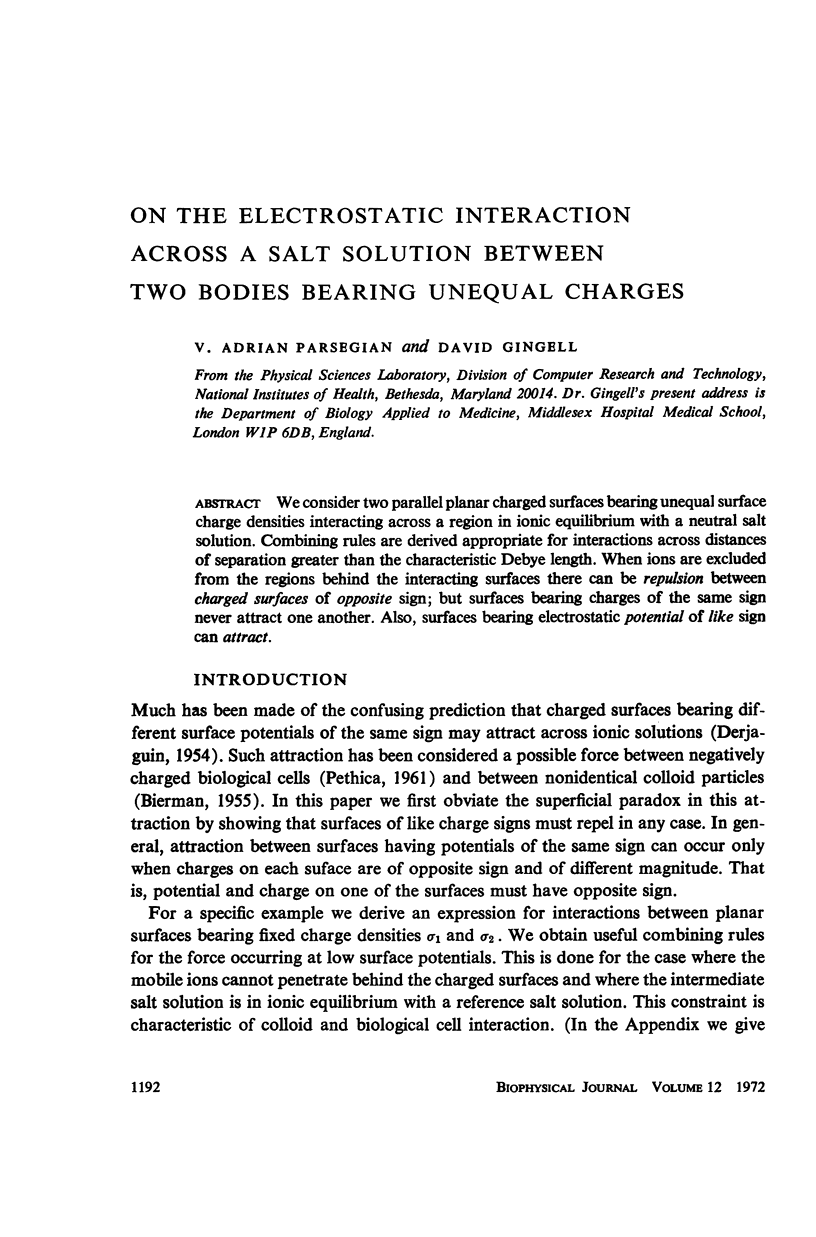
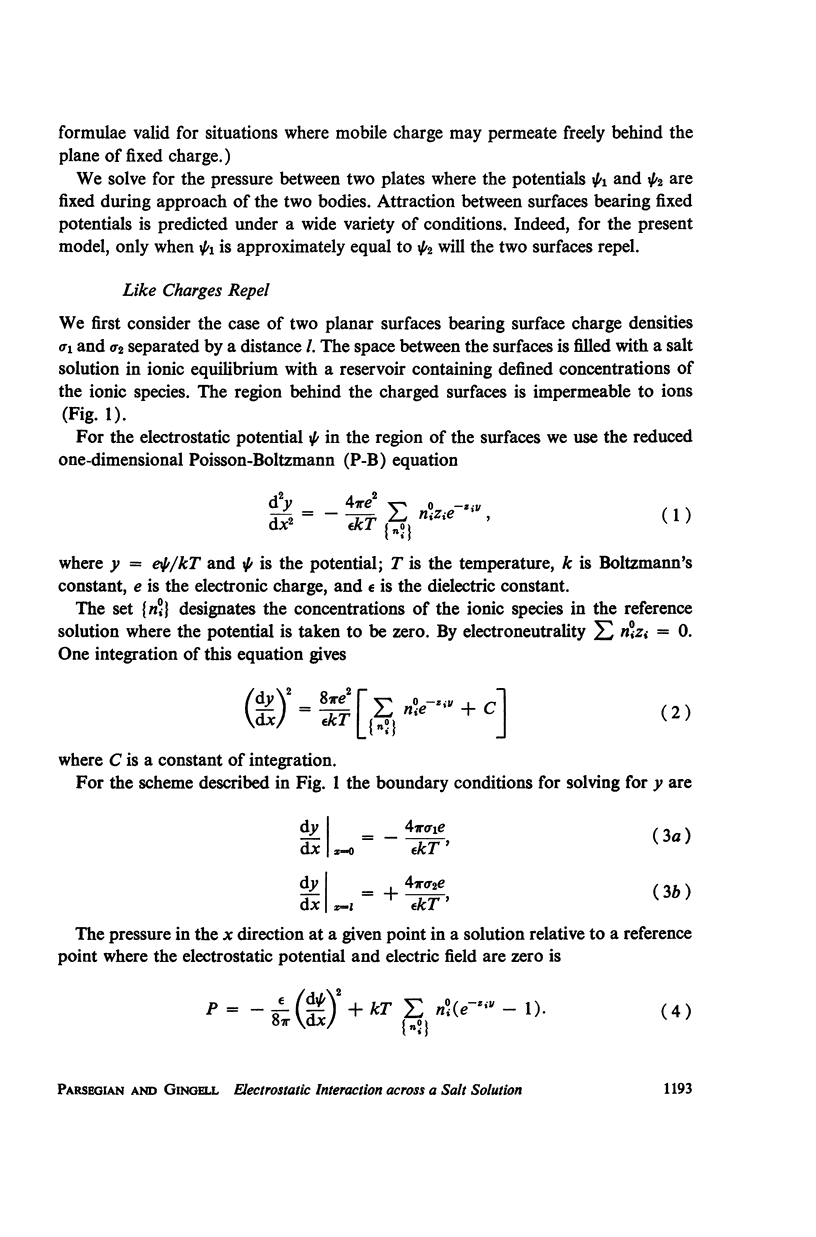
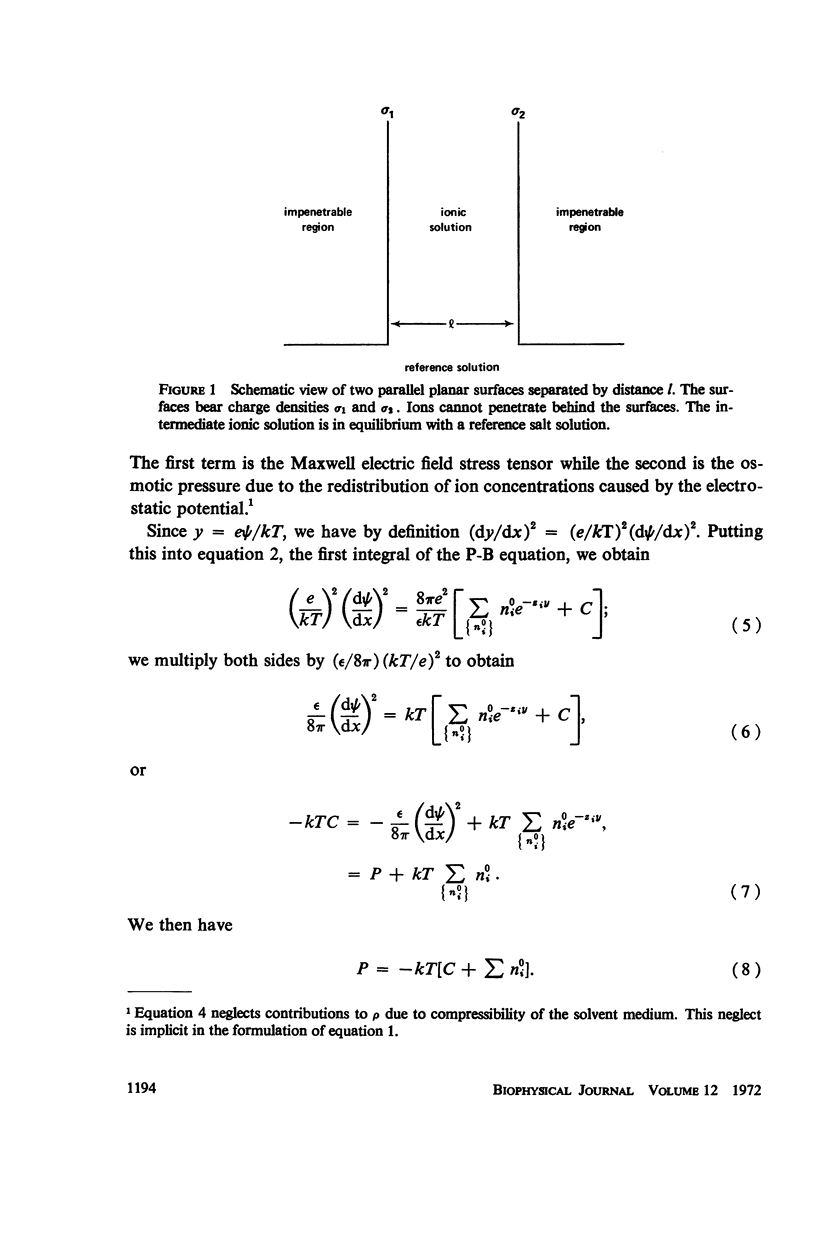

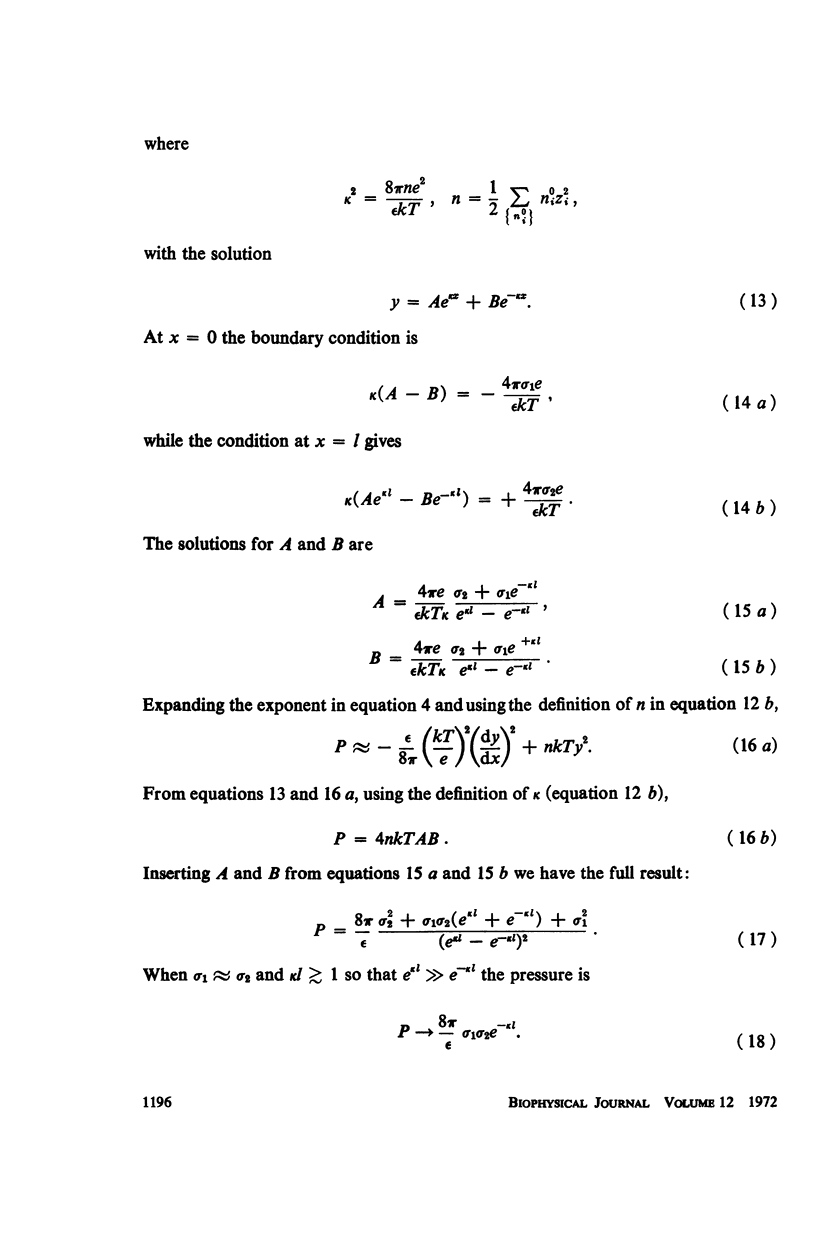
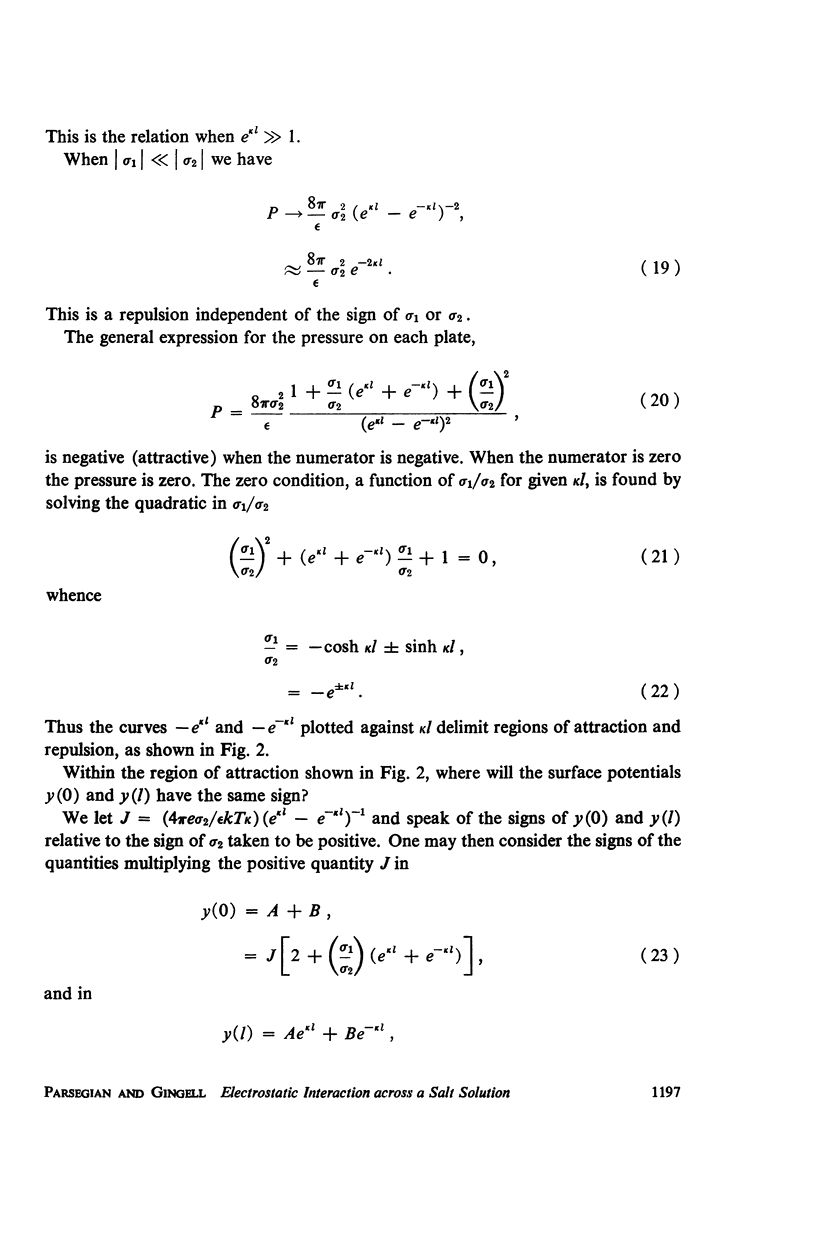
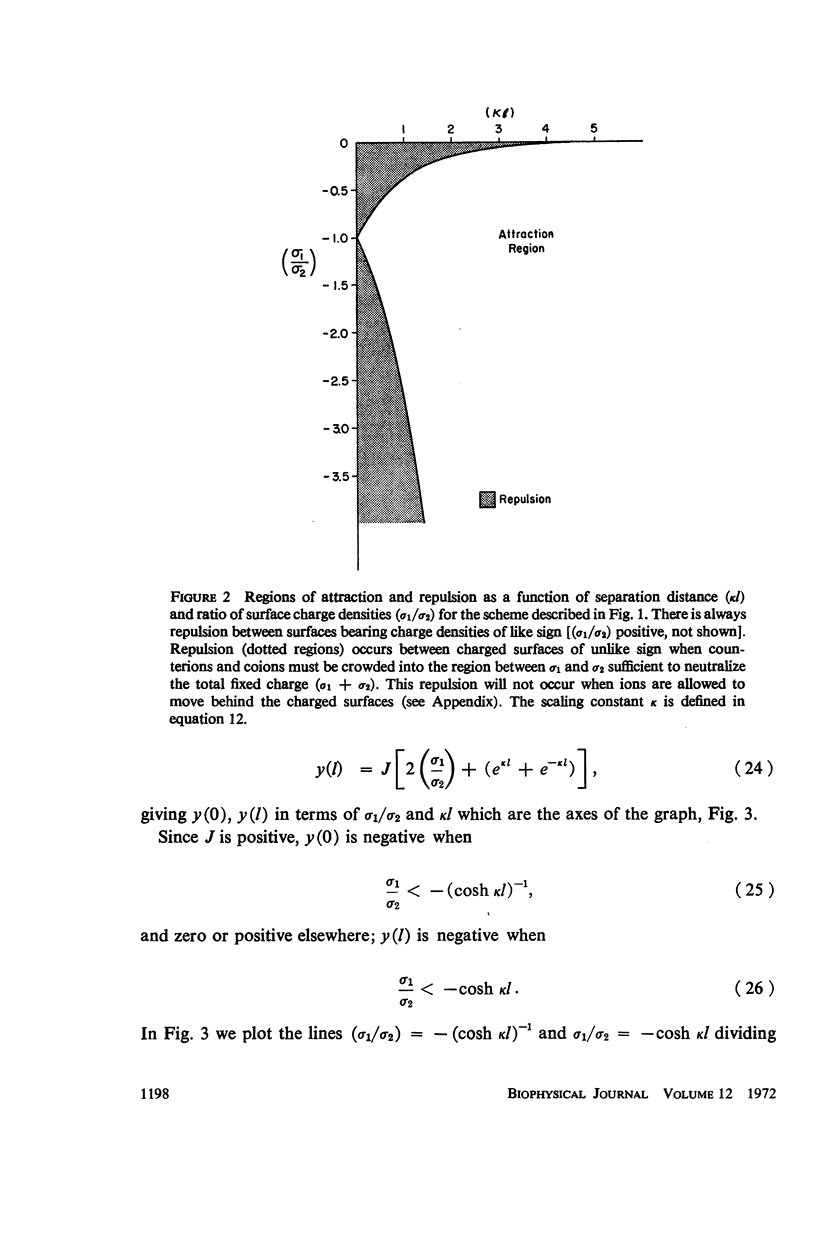
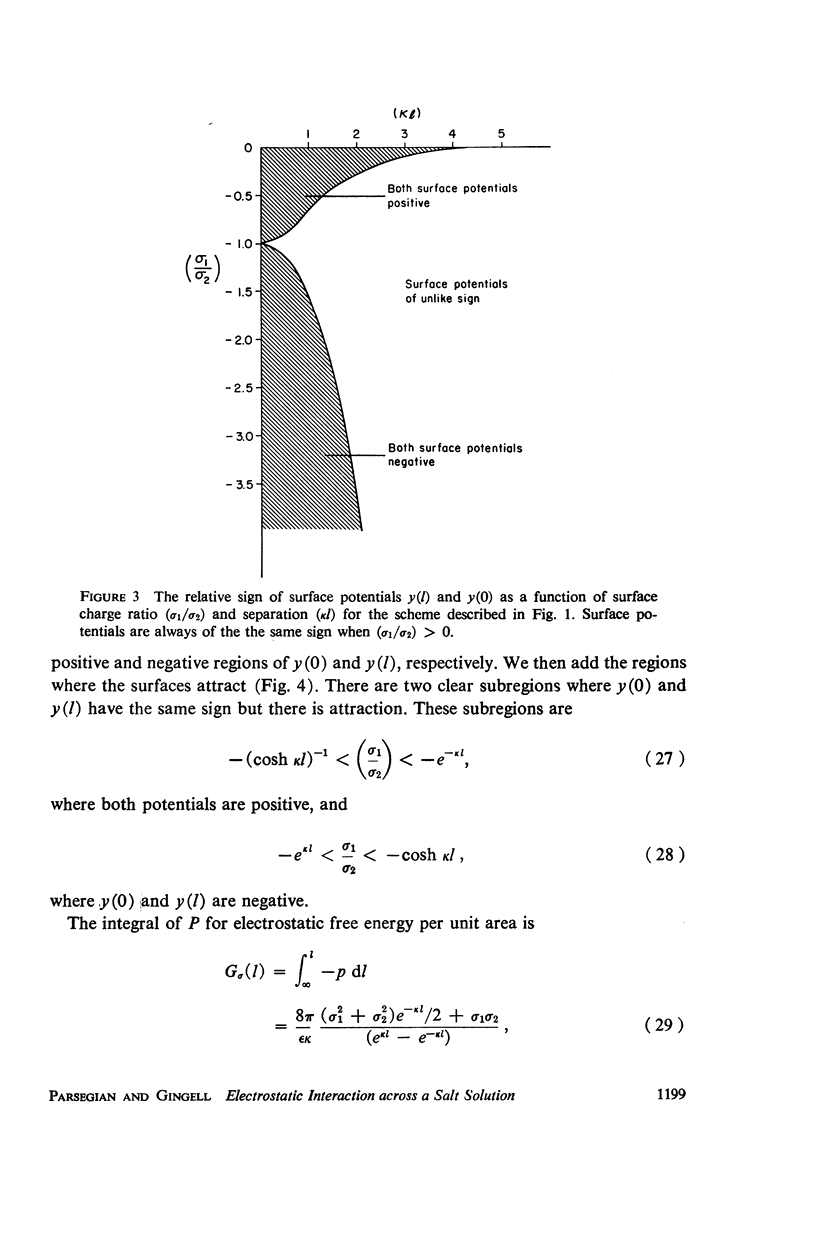
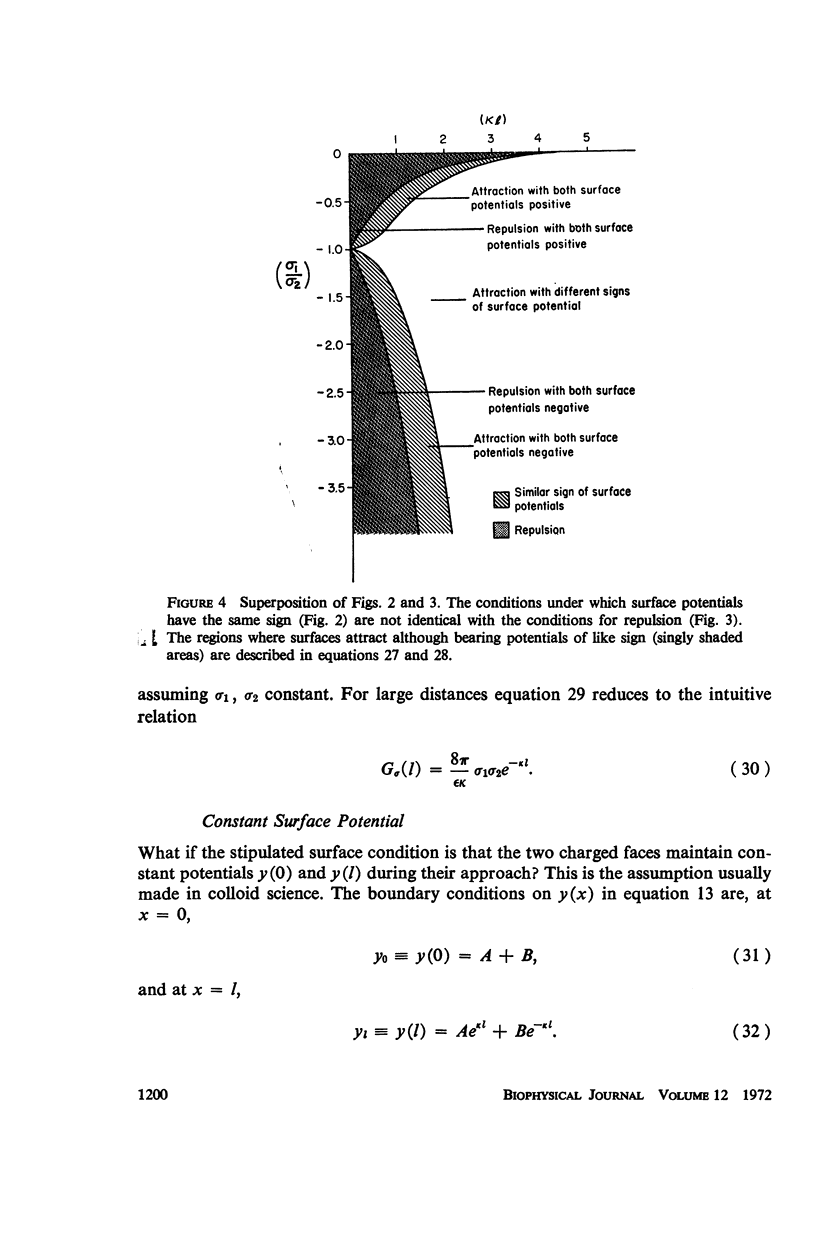
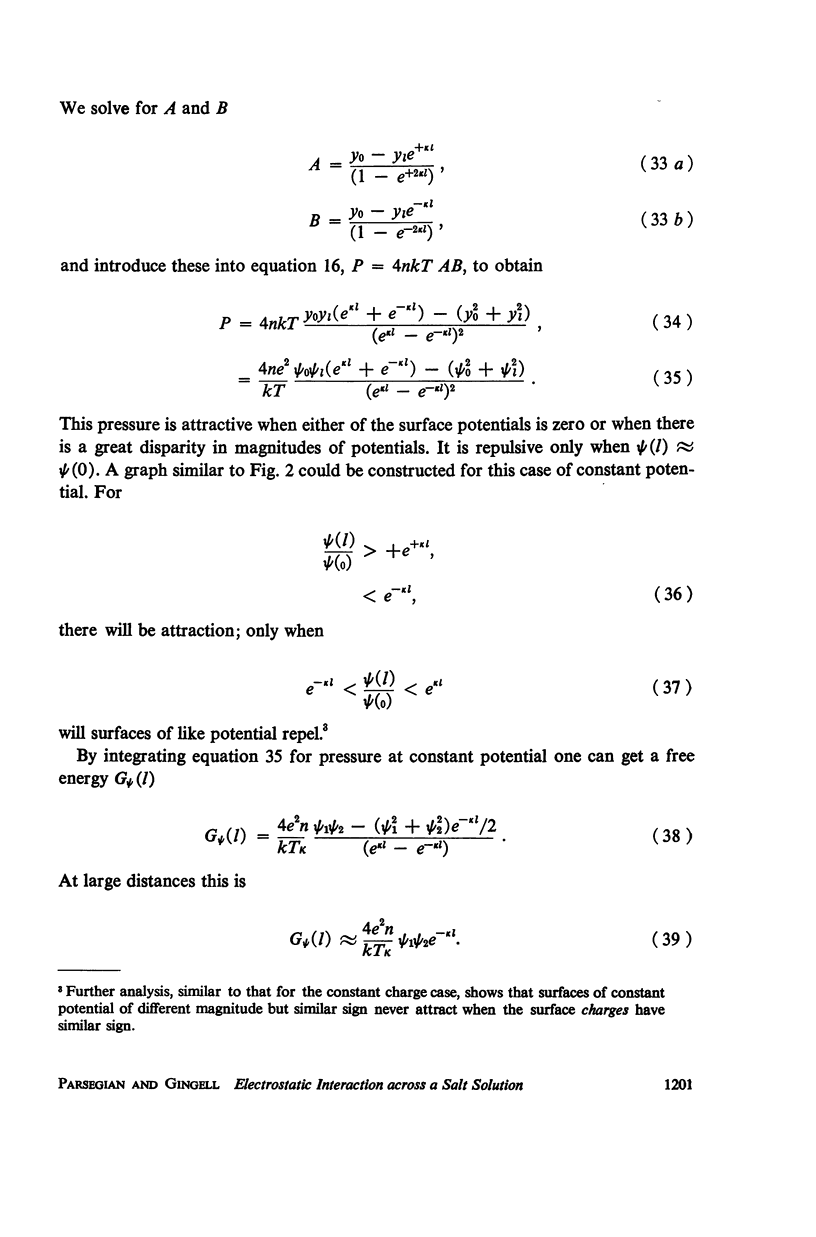
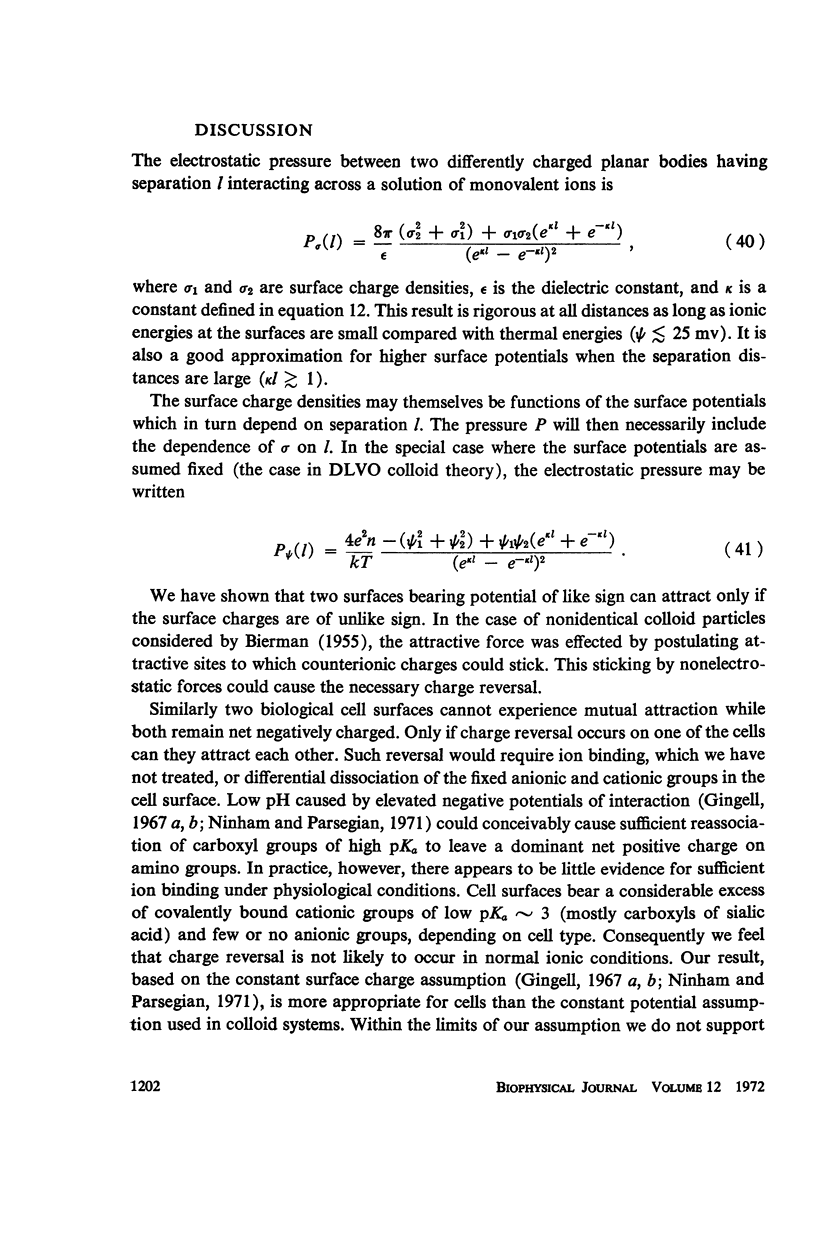
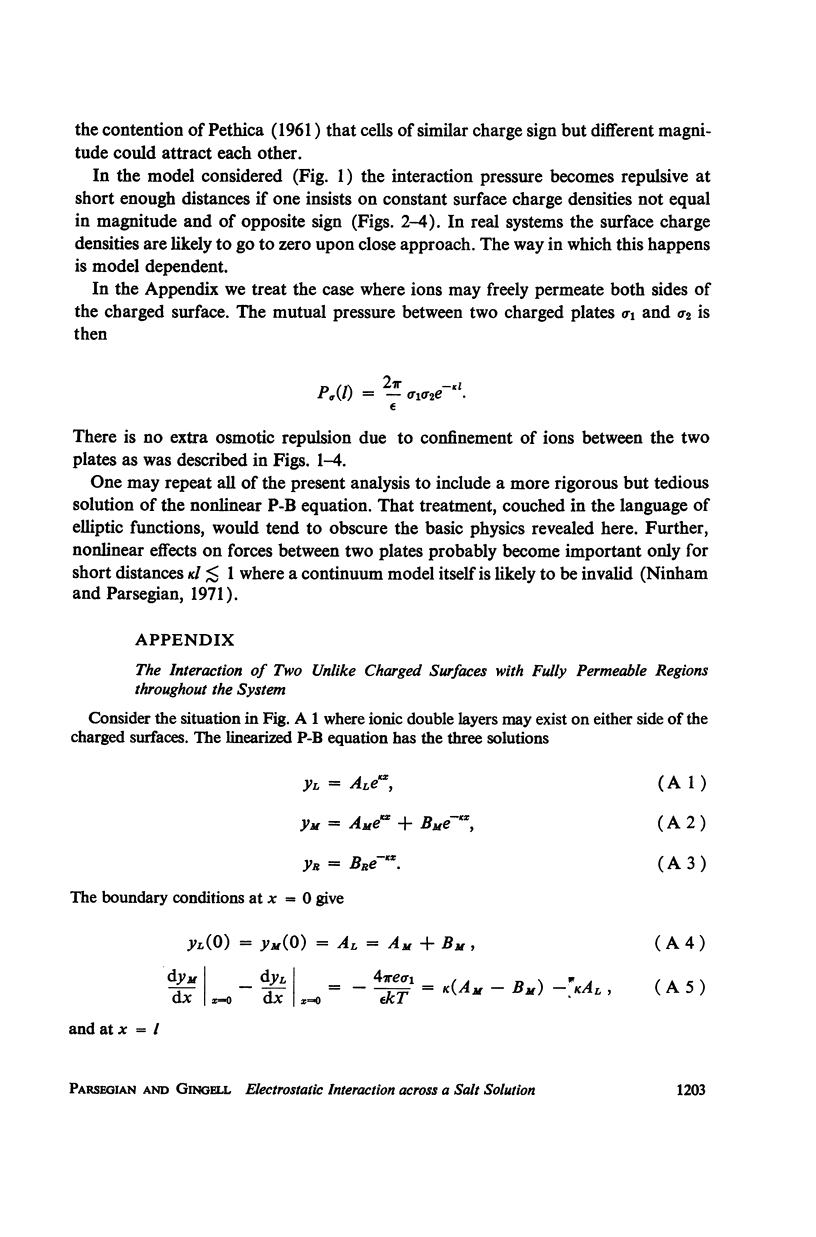
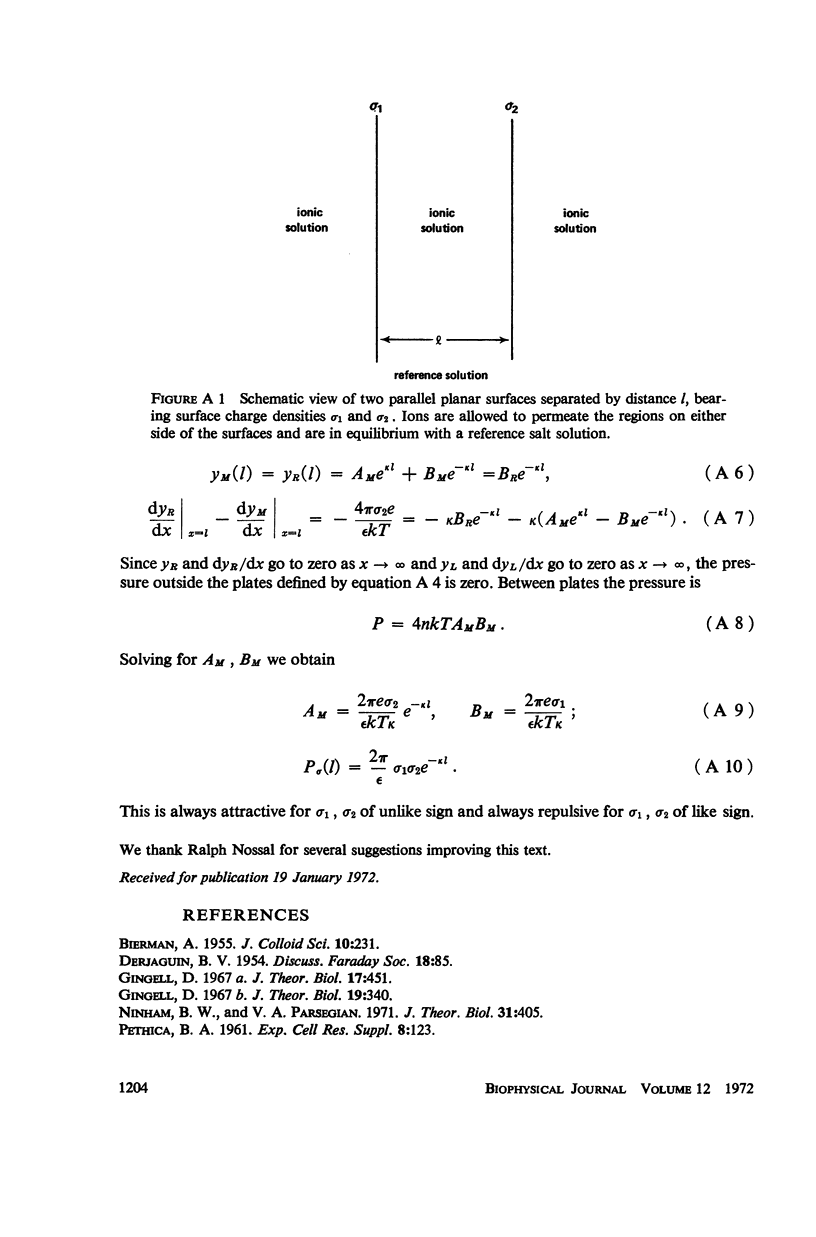
Selected References
These references are in PubMed. This may not be the complete list of references from this article.
- Gingell D. Computed surface potential changes with membrane interaction. J Theor Biol. 1968 Jun;19(3):340–344. doi: 10.1016/0022-5193(68)90147-1. [DOI] [PubMed] [Google Scholar]
- Gingell D. Membrane surface potential in relation to a possible mechanism for intercellular interactions and cellular responses: a physical basis. J Theor Biol. 1967 Dec;17(3):451–482. doi: 10.1016/0022-5193(67)90107-5. [DOI] [PubMed] [Google Scholar]
- Ninham B. W., Parsegian V. A. Electrostatic potential between surfaces bearing ionizable groups in ionic equilibrium with physiologic saline solution. J Theor Biol. 1971 Jun;31(3):405–428. doi: 10.1016/0022-5193(71)90019-1. [DOI] [PubMed] [Google Scholar]
- PETHICA B. A. The physical chemistry of cell adhesion. Exp Cell Res. 1961;Suppl 8:123–140. doi: 10.1016/0014-4827(61)90344-5. [DOI] [PubMed] [Google Scholar]


